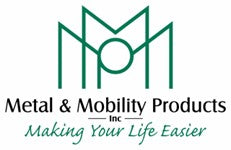
Take a closer look
The SafetySure® Transfer Board bridges the gap between two patient transfer points. The Transfer Board is made of flexible plastic. It is comfortable to sit on and is easily removed after use. Available in 23" and 30" lengths. Weight capacity 300 lbs.
The SafetySure® Transfer Board is used primarily for seated patient transfers:
- Patient transfers between bed and wheelchair
- Patient transfers between wheelchair and car
- Patient transfers between wheelchair and toilet
Transfer Board helps the patient transfer between surfaces of similar or slightly different heights. If you have decreased upper body strength, work with a caregiver to help you transfer. Using the industry standard of “a third, a third, a third”, place one third of the board on the surface you are transferring from, place another third onto the surface you are transferring to, and the remaining third is the space in between the two transfer points.
Support your body weight on the flat surface as you move slowly and carefully paying attention to your movement and the location of your body as you transfer across the board. Don’t drag your buttocks on the board. Keep your body in the correct position keeping your feet flat on the floor throughout most types of transfers. When transferring, never put your hands or fingers under the board.
WARNING:California's Proposition 65
How to use a Transfer Board
Product Specifications:
| Specification |
5021 |
5051 |
| Length |
23" |
30" |
| Width |
12.5" |
12.5" |
| Thickness |
1/4" |
1/4" |
| Product Weight |
2 lbs |
3 lbs |
| Weight Capacity |
300 lbs. |
300 lbs. |
Positioning
Place the SafetySure Transfer Board under one hip on the individual to be transferred. Tilt the individual towards the SafetySure Transfer Board, taking the weight of the other hip. With the individual entire weight now resting on the board, the individual can easily be transferred. To remove, bend the patient transfer board upward toward the individual (fig. 2) and slide the board from underneath the patient.
.gif)
Patient Transfer from bed to wheelchair
During patient transfer from a bed to a wheelchair, it is often advantageous to position the wheelchair at a slight angle to the bed so that the rear wheel of the wheelchair is not in the way of the patient transfer. It is better if the bed is a little higher than the wheelchair to allow for a downward transfer. The most common procedure is for the patient to be transferred to sit on the edge of the bed and then slide across to the wheelchair on the SafetySure Patient Transfer Board (fig. 3-4).
.gif)
Patient transfers from the wheelchair to the bed often involve and upward movement if the bed cannot be lowered. In this instance, the patient transfer can be made easier by the use of a SafetySure Patient Transfer Belt (fig. 6-7).
.gif)
Transfers between wheelchair and toilet
When transferring an individual between wheelchair and toilet (fig. 8-9), two things should be kept in mind. Bare and damp skin does not always slide on the SafetySure Patient Transfer Board. A towel or toilet paper under the individual's buttocks will solve this problem. As an alternative, you can remove the individual's lower garments after the patient transfer has been completed.
Since there is only a small area of contact between the SafetySure Patient Transfer Board and the toilet seat, it is recommended that the caregiver hold onto the board to make sure that it is kept firmly in position.
.gif)
Transfer between wheelchair and car
During a wheelchair to car transfer, the Transfer Board functions best if the caregiver works from inside the car pulling the individual carefully towards them (fig. 10). In the case of a totally passive individual, a SafetySure Transfer Sling (item 3011) and a SafetySure Transfer Belt maybe used in addition to the SafetySure Transfer Board. These additional items allows for a safe and easy patient transfer (fig 11).
.gif)
Directions for use
Please read the instruction sheet before you use the SafetySure Transfer Board. If you have any questions concerning the proper use, call Metal & Mobility Products at our toll free number 888-854-4687. We will be glad to answer all of your questions.
